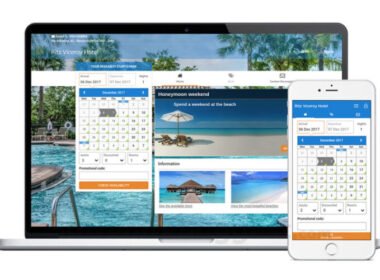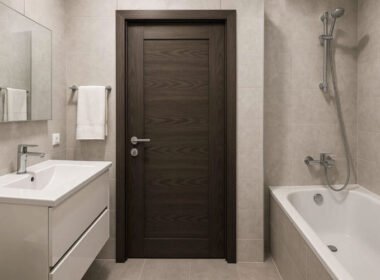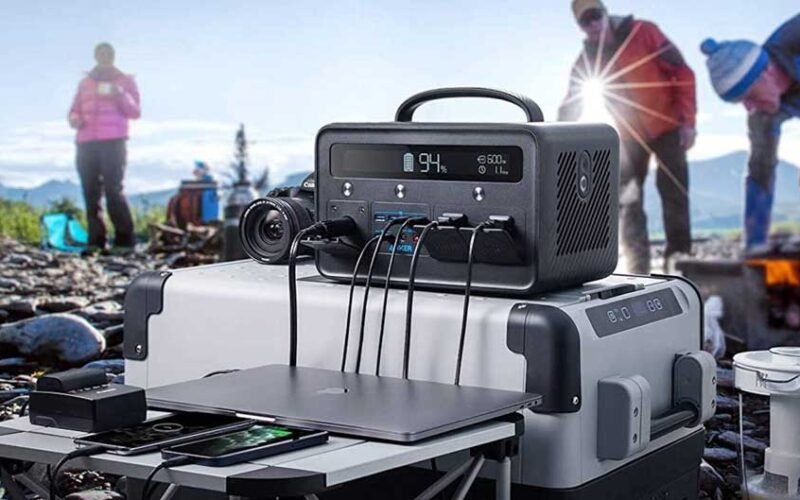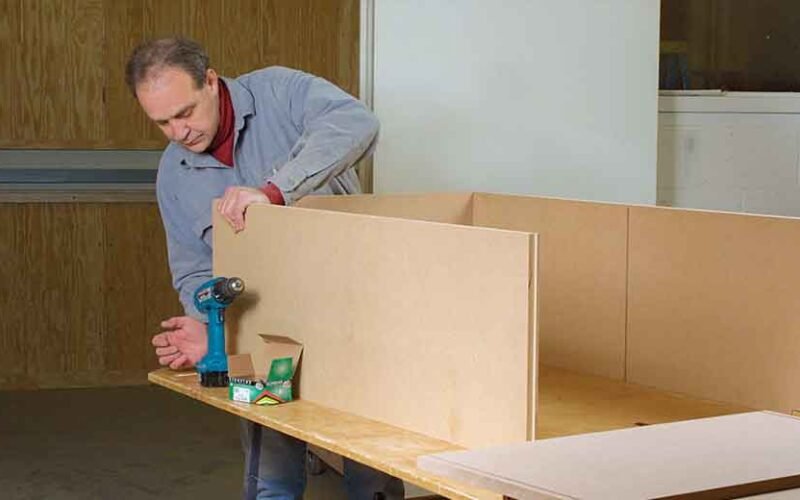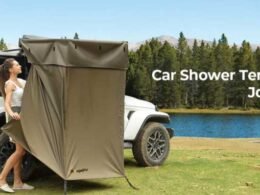Imagine this: You’re out in the wild, some of the last untouched nature left to humans, when your phone dies right at the very moment when you need to pull it out and check your GPS coordinates. You’re about to take that perfect shot at sunset, but your camera has run out of battery, making the gear useless when you should be using it. These are all-too-common outdoor scenarios where dependable power sources simply have become a camping necessity of the present day.
Enter the power station – these little powerhouses are redefining how we experience the outdoors. These groundbreaking devices represent the perfect synergy of reliability and a lifestyle of convenience for users who want to be ready for anything at any time. In contrast to traditional power supplies, these portable buddies provide continuous power for emergency communications devices, camping gear that makes life a little more comfortable.
Whether you’re a weekend warrior or a more serious backpacker, knowing how to channel portable power can separate an OK experience in the great outdoors from a truly exceptional one. In this guide, I will discuss how to select and use your perfect power station for your travels, so you remain powered up and ready to go, all while treading lightly in the great outdoors.
Why Campers Need Specialized Power Solutions
While conventional answers such as car batteries may seem sufficient for camping power, they have a few important shortcomings. Car batteries are heavy, possibly hazardous with their acid, and not made for the sort of prolonged power draw that camping would require. By comparison, today’s portable power stations provide a safe, dependable source of power – built specifically for use in the outdoors.

These specialized units become essential when considering critical needs like powering CPAP machines, maintaining emergency communication devices, or keeping vital medications refrigerated. Weather-resistant construction ensures functionality during unexpected rain or temperature swings, while lightweight designs make transportation manageable even on challenging terrain.
In addition to utilitarian advantages, however, portable power stations are an overly good match for leave-no-trace ethics. Unlike generators, they run quietly and produce no fumes, maintaining the peaceful ambiance of forward pack area. By tapping solar power, it enables environmentally conscious campers to camp off-grid for long periods. The combination of reliability, flexibility, and environmental responsibility makes specialized power solutions essential for today’s go-anywhere, do-anything outdoor enthusiasts.
Essential Features of Camping-Ready Power Stations
Portability & Weight Considerations
The perfect camping power station weight for you will largely depend upon your adventure type. Backpackers can concentrate on ultralight models that weigh under 10 pounds with car campers opting for stations weighing up to 30 pounds. Top makers such as EcoFlow have changed the game, offering lightweight (but powerful) units with ergonomically designed handles and rubberized grips, and augmented by reinforced corner protection to endure an occasional bump along the rough trail.
Battery Capacity & Output Options
It is important to know power requirements so that the proper rated size can be chosen. A 500Wh station can charge a phone over 40 times, power a camping light for over 100 hours, and a portable refrigerator for 20+ hours. A variety of outputs are a must – in particular choose something with at least a couple of AC outlets, a number of USB ports including some USB-C and 12V DC outputs. The capacity to power several devices at the same time ensures your equipment is always ready to go.
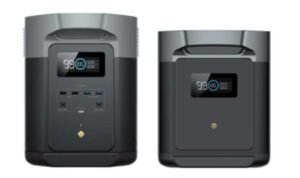
Recharging Methods & Speed
Multi-recharging options ensure flexibility for your station out in the field. The compatible solar panel will provide direct full charge from good sunlight within 8-12 hours; and during travel, car charging can be used as a power supply backup. In your pre-trip planning, figure 4-6 hours from the wall outlet to charge up to the max. Pass Through Charging: Some modern stations even have a pass-through power, which can let you charge your devices simultaneously when they are recharging the power station.
Selecting Your Ideal Portable Power Station
Begin your power station search by taking a detailed list of devices. Note every electronic item you plan to take camping along with their power usage in watts and estimated daily usage in hours. For instance, 60W laptops that run 3 hours a day require 180Wh, and 5W LED camp lights that run 8 hours a day consume 40Wh. Add those figures together to find your minimum power station capacity, and then multiply by 1.5 for a safety margin.
Field reliability in an outdoor environment is one situation where environmental durability is important. A rating of at least IPX4 for water resistance is another feature to seek out, which will shield against rain (and wet snow) and splashes at the very least. Temperature resistance should fall between 32°F to 104°F (0°C to 40°C) for general camping. High-altitude performance counts as well – make sure the station works fine with the elevation that you plan camping on.
Confirm sound levels during operation (essential for nighttime). The most high-quality power stations run between 40 decibels – or the sound of a library whisper. This quiet function keeps the camping mood peaceful and it can be placed around a sleeping area. Also, so the unit can be used for a home backup during a power outage, getting even more bang for your buck dual use. This home backup feature is especially useful for campers during stormy weather or if there is an emergency.
Maximizing Power Station Efficiency on Trips
Pre-Trip Preparation
Start with charging your power station up all the way at least 24 hours before you leave. Develop a custom kit that comes with everything needed, stripped out cables; short cables bundled in protective wraps, adapters, solar panels in protective sleeves. Clearly label each part and keep them in a waterproof case. Wish I could tell you it will work for your prayer charger but I guarantee it will work for the solar panel setup. Be sure to test all charge methods (particularly the solar panels) before hitting the road for proper function.
On-Site Power Management
Priority list of charging (if you have an actionable power supply) – emergency communication, medical device, comfort/tool of comfort. For best results, position panels directly towards the sun and angle the panels so they are perpendicular for the most sunlight and the highest charge (and don’t forget to reposition as the sun moves!) Solar charge devices during the day so while the sun is up and about at its peak your device is charging before the sun goes down.
Use smart power conservation by enabling devices and phone functions when you need them and using airplane mode, or dimming your screen to the lowest level at which you can still read. Think of how multi-functional one device can be – your cell phone is your camera, GPS, and entertainment unit. If you plan to stay longer than 2-3 days, leave yourself a 30% power buffer for emergencies, and time your device charging during daylight for optimal solar input. This strategy helps to ensure that your power station maintains critical tools throughout your journey while utilizing resources optimally.
Safety & Maintenance Best Practices
It is important to ensure proper ventilation when using portable power stations. Be sure and allow at least 6 inches of space all the way around the unit, and don’t place it in any enclosed spaces or out in the open where it may be exposed to direct sunlight to prevent the unit from overheating. When in use, set the station on a level, even place that is free of moisture and flammable objects. You should always occasionally check the device’s temperature, particularly when in use or being charged.
To maximize battery life, the power station should be stored in a cool, dry location with a temperature between 50-70°F (10-21°C). If you need to store it for a long time, please charge the battery to 40%-60% and keep the battery out of your E-BIKE and charge it every 3 months. Following camping, examine the unit for damage and clean all openings and surfaces with compressed air and a damp microfiber for cleaning. Focus on connection positions; you need to clean, there should be no dust that affects charging efficiency.
* Charge It Properly Avoid over-discharging by not using the battery to 0%. Keep it charged to over 20% for use. Wherever it is possible, do not make use of the battery while using the battery recharging. Use the original charger and cable or the manufacturer’s recommended accessories for charging the battery. When released, you are also notified of new firmware to boost performance and additional safety features to help keep your cables safe.
Powering Your Outdoor Adventures: Final Thoughts
The perfect portable power station turns camping from a primitive outdoor experience to something that feels like a comfortable, safe adventure. That’s why choosing the right capacity and sturdiness is what determines the best partner for any of your outdoor adventures. Don’t forget the perfect unit will have the perfect combination of portability and power, and can even store solar so you can fill up that battery wherever the day takes you.
Powering your outdoor adventure is no longer just about convenience, it’s about staying connected for your essential devices, maintaining your lifestyle, and being environmentally responsible through clean, sustainable solar power. Whether you’re hiking and camping, heading out for a weekend getaway, or embarking on an extended trip or backcountry adventure of whatever nature, practical, portable power affords you the freedom to remain completely connected and fully charged in any situation.
Bring your outdoor life to another level and start to enjoy it at its fullest with POWERADD portable brute 45,000! When prepared, properly maintained, and used according to the operating manual, you will experience years of reliable use. With proper training, the GDS system will provide you with the confidence and capability to enjoy all of your adventures knowing that you can maintain a charge for all your devices. Begin planning your next outdoor adventure knowing you’ll have the energy you need when and where you need it.

